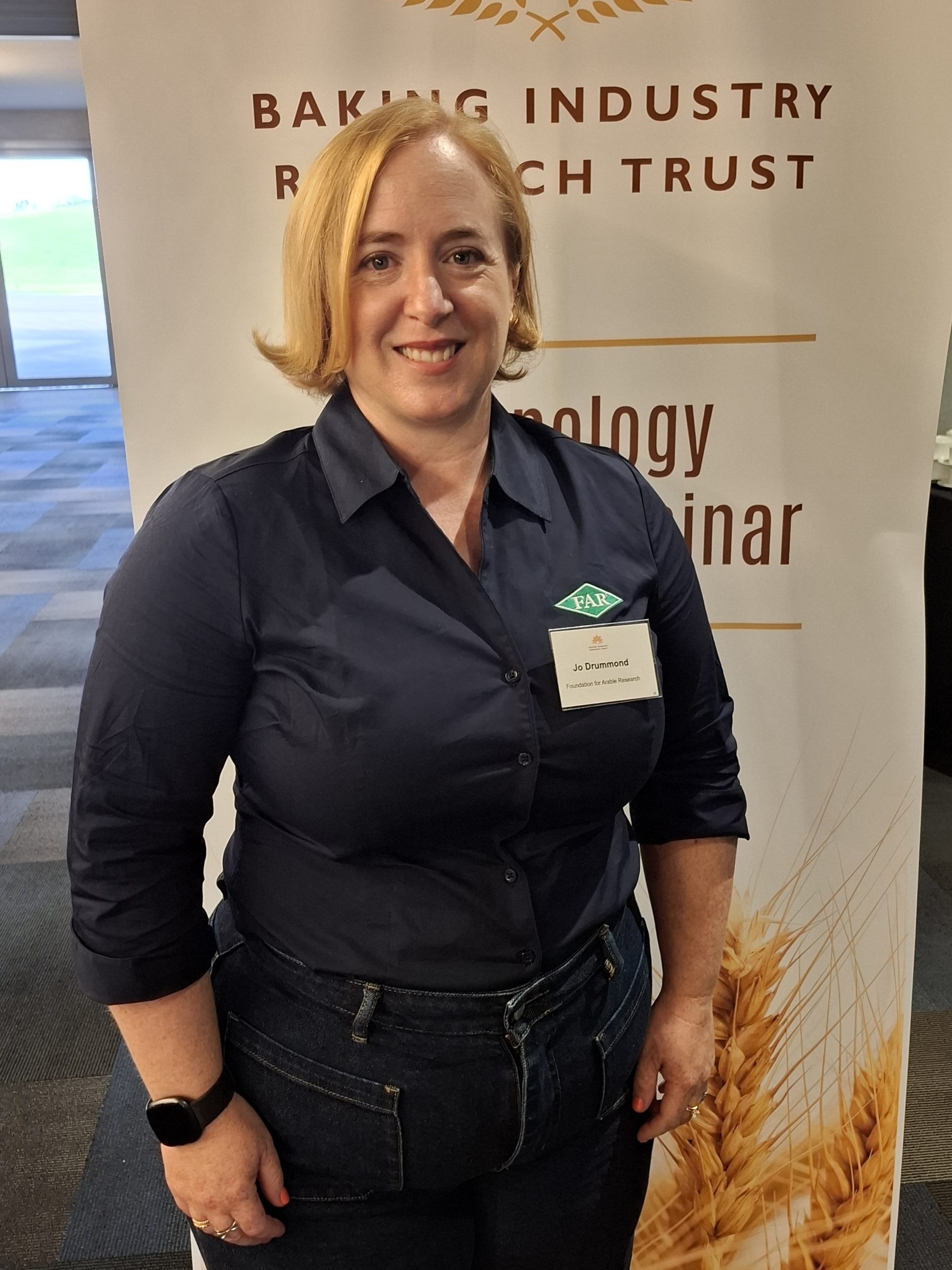Recent Articles
- 2025 Entrants Bread Baker of the Year Competition
- New logo shines light on New Zealand-grown grains
- Recovering valuable resources to create sustainable biogas and biofertilizer
- Field to Flour: Can we reduce our footprint?
- Leading Action on Food Waste
- Bread bags from bread returns
- Baking Global Technology Scan
- Sustainability for the Baking Industry – Food without Footprint
- Better energy management for bakers
- Update on the Soft Plastic Recycling Scheme
Presented as part of Technology Transfer Seminars 2025
Jo Drummond, Foundation for Arable Research, Senior Researcher
Jo Drummond is a Senior Researcher with the Foundation for Arable Research (FAR), where she runs the cereal research programme. A graduate of Lincoln University, she has worked in the arable sector for 20 years and has experience of both NZ and UK systems. Jo works with growers to support development of sustainable cereal programmes. Her areas of interest are agronomy, applied pathology and entomology, pesticide resistance management and agroecology.
Taking sunlight and running it into money – a lighter touch
Jo works with cereal growers, operating at the start of the process that leads to a loaf of bread. She took us back to the basics, explaining the growing process, the influencing factors, and their impact on flour supply and baking. She emphasized how systems are having to evolve as consumer demands change.
Jo outlined the challenges of growing wheat, highlighting the roles of variety, management, and weather. She described the sun as the fuel, the crop as the engine, management as the driver, and the environment as the wild card, noting that we can control very few of these factors. Weather can ruin even the best plans, producing unusable wheat. And climate change, with its flooding and droughts, is now exacerbating these issues.
Quality is another challenge. Milling wheat growers are paid based on yield and quality and receive a price premium over feed wheat. Despite this premium, the majority of the wheat grown in New Zealand is grown for animal feed. Growing enough high-quality milling wheat is both an art and a science. Protein, water absorption, dough elasticity, gas retention, gluten webbing, volume, colour, crumb, and shelf life are all influenced by the variety, management and environment under which the milling wheat was grown.
Management, particularly nitrogen use, is crucial. Nitrogen is the biggest input cost, requiring a careful balance between supply and demand. Growers must consider how much nitrogen to apply, when, and where, while also recording and reporting it. Up to 50% of applied nitrogen can be lost through leaching, emissions, runoff, erosion, and immobilization. Jo emphasized the long-lasting impact of nitrous oxide from nitrogen fertilizer, which persists much longer than methane from livestock.
Overusing nitrogen is wasteful both to the environment and financially, so finding the economic optimum rather than targeting the total biological option is a useful risk mitigation strategy. FAR’s research has identified this sweet spot, allowing farmers to reduce nitrogen use, maintain quality, remain profitable, and reduce greenhouse gas emissions.
Agrichemicals are another hot topic. They protect yields by managing diseases, pests, lodging, and weeds. However, farmers face a shrinking arsenal as pesticides are removed from the market, pesticide resistance grows, and consumer awareness of food residues increases. Pursuing yield at the expense of the environment is no longer viable. But removing all agrichemicals could result in at least a 30% loss of production, so building resilience is crucial. Crop protection practices, including precision agriculture, plant breeding, and biocontrol, will play key roles. Plant protection products will still be used, but they can’t be the sole defence. Layering strategies is becoming the norm to enhance systems and start the journey toward sustainability. This is challenging for farmers but will become expected.
Jo’s take home message is that we can reduce our environmental and economic footprint while still producing high-quality products, but growers must operate within limits and will have to make do with less as climate change, weather extremes and reduced access to agrichemicals test their resilience.

